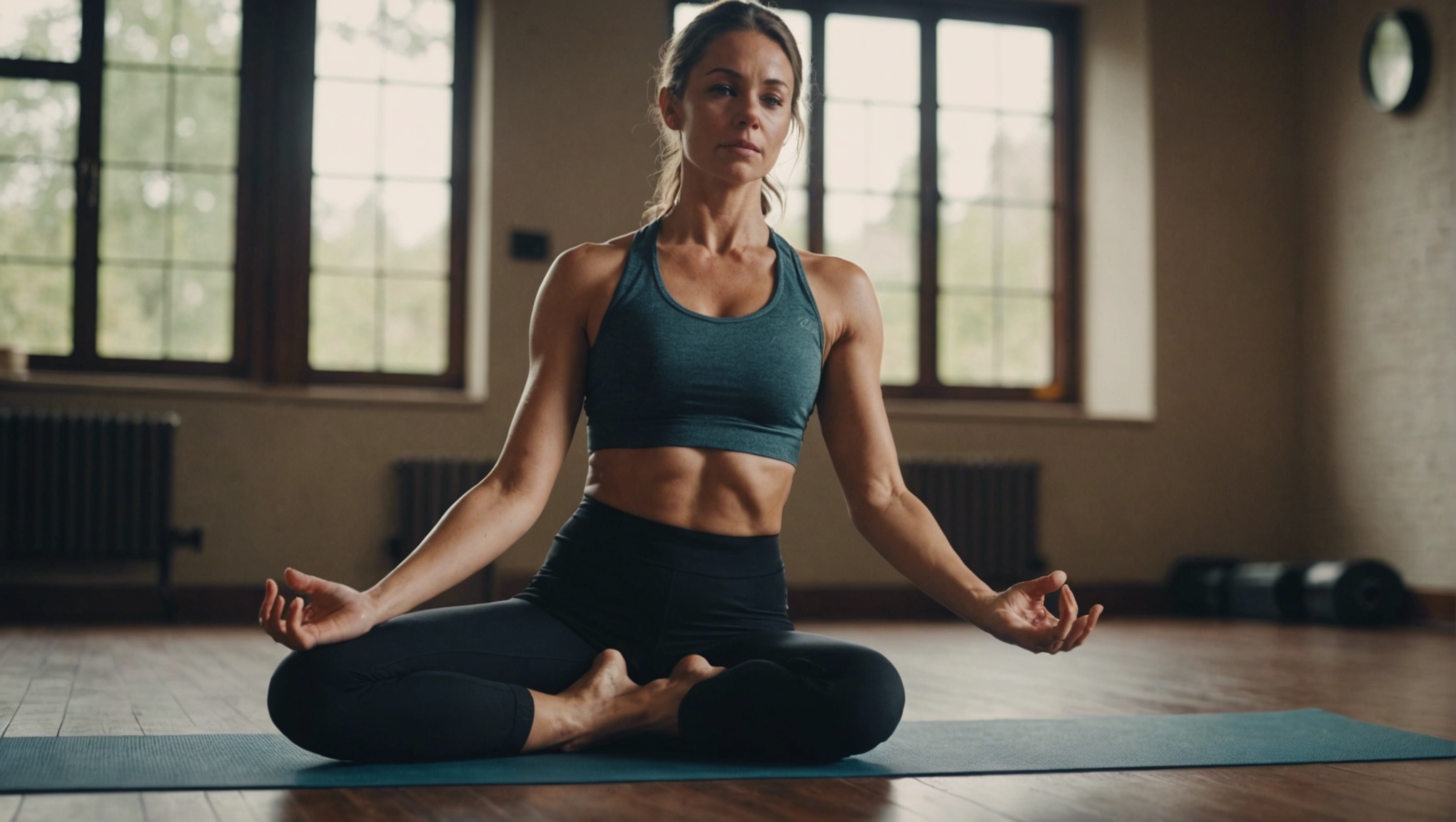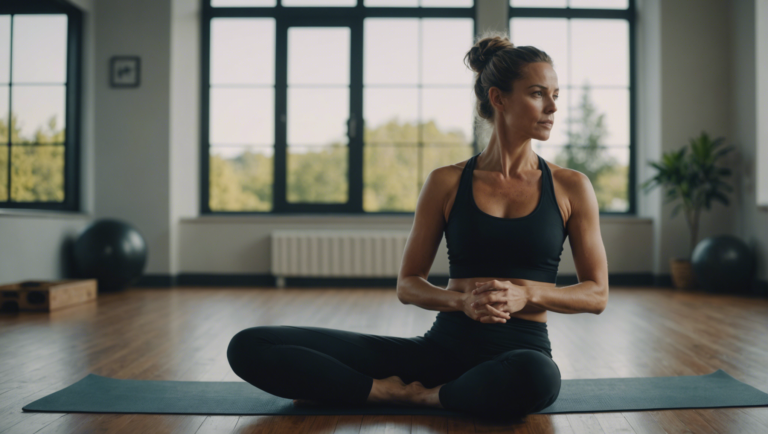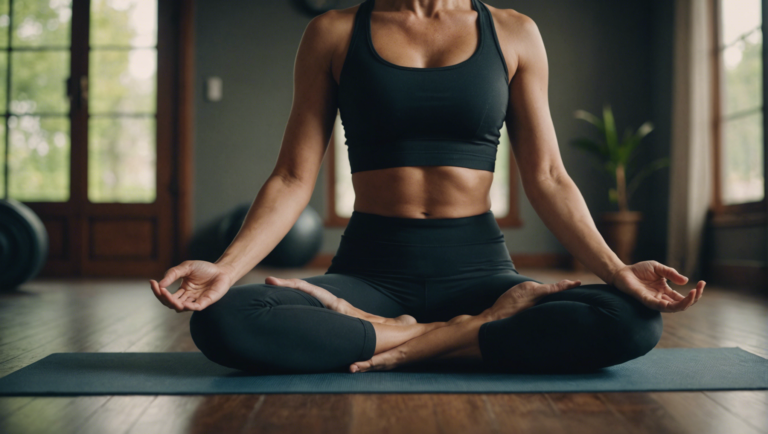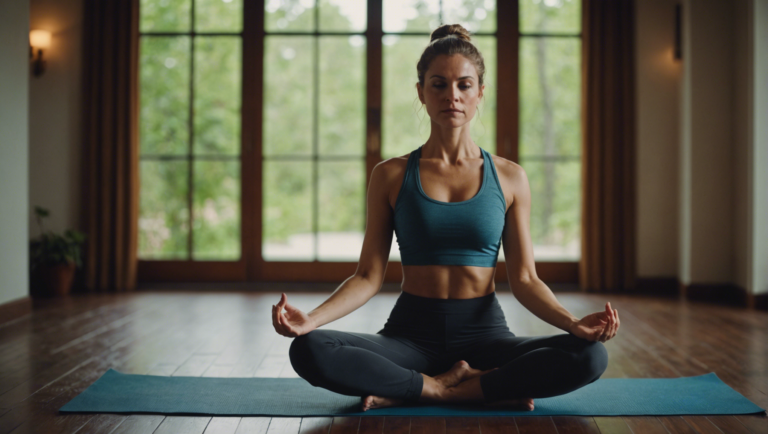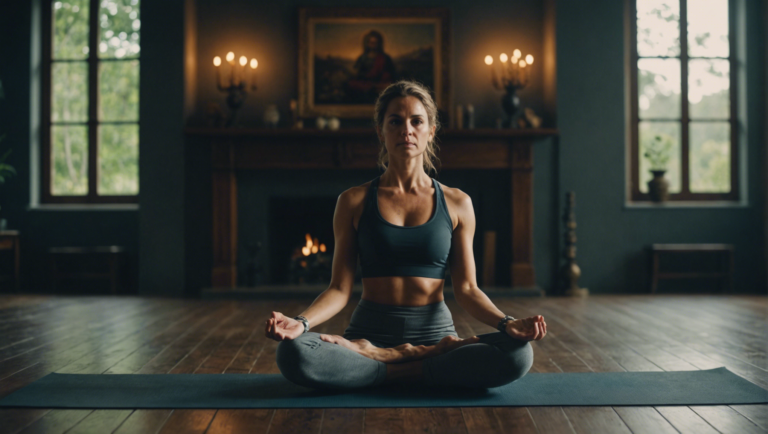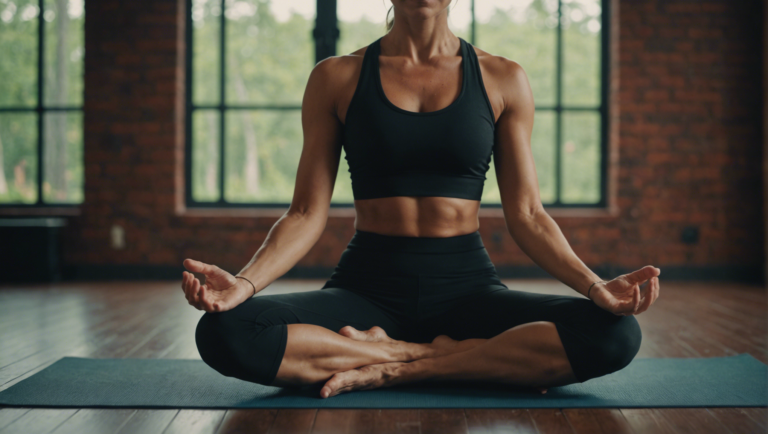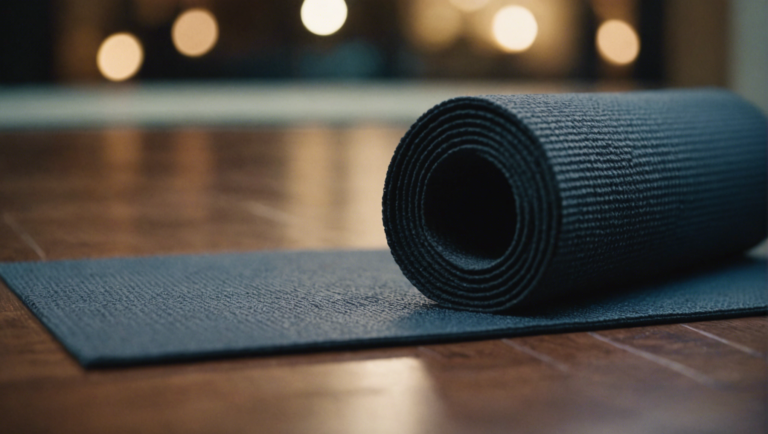Discovering The Best Yoga Practices For Enhanced Flexibility
Discovering the Best Yoga Practices for Enhanced Flexibility
Yoga is a millennia-old practice that has evolved into numerous forms, each offering unique benefits for the body and mind. Among these, enhancing flexibility stands out as a commonly sought-after goal for many practitioners, from beginners to advanced yogis. Flexibility is not just about touching your toes or mastering complex poses; it’s about reducing the risk of injuries, improving posture, and increasing circulation and energy flow throughout the body. This exploration into yoga practices tailored for improving flexibility will delve into the nuances of various asanas (poses) and how they can be seamlessly integrated into a routine to yield significant benefits.
Unlocking the Secrets of Asana Selection
The key to enhanced flexibility lies in the mindful selection of asanas that target multiple muscle groups, promoting elasticity and strength. These poses are designed to work on the body’s connective tissues, including ligaments and tendons, fostering an environment of growth and flexibility.
-
Forward Bends: Positions such as Paschimottanasana (Seated Forward Bend) and Uttanasana (Standing Forward Bend) are excellent for stretching the hamstrings, spine, and calves. They also encourage a calming effect on the mind, which can aid in deeper relaxation and flexibility over time.
-
Hip Openers: Asanas like Pigeon Pose (Eka Pada Rajakapotasana) and Frog Pose (Mandukasana) focus on the hips, a common area of tightness for many individuals. These poses help in loosening tight hip flexors and increasing the range of motion, essential for achieving overall flexibility.
-
Backbends: Backbends such as Bhujangasana (Cobra Pose) and Ustrasana (Camel Pose) are pivotal for spine flexibility. They strengthen the back muscles, improve spinal mobility, and open up the chest and shoulders, contributing to improved posture and flexibility.
-
Twists: Twisting poses like Marichyasana (Marichi’s Pose) and Ardha Matsyendrasana (Half Lord of the Fishes Pose) are excellent for detoxifying the body and increasing spinal flexibility. These asanas encourage the rotation and elongation of the spine, promoting greater flexibility and aiding digestion.
Integrating Breath and Movement
The synchronization of breath and movement, known as Vinyasa, is a fundamental aspect of enhancing flexibility through yoga. Engaging in a flow that incorporates a series of poses linked by the breath not only warms up the body, making it more pliable but also deepens the stretch and amplifies the benefits.
-
Ujjayi Breathing: Also known as "Victorious Breath," this technique involves breathing through the nose with a slight constriction in the back of the throat. It generates internal heat, which is instrumental in increasing flexibility.
-
Slow, Controlled Movements: Rather than rushing through poses, moving slowly and with intention allows the body to gradually acclimate to each stretch, reducing the risk of injury and allowing for a deeper release.
Crafting a Routine for Long-Term Success
Developing a consistent yoga practice is crucial for seeing advancements in flexibility. Beginners might start with a shorter, 20-minute session focused on gentle stretching and gradually increase the duration and intensity as their flexibility improves. yoga at least three times a week provides a solid foundation for progress, but even daily practice can be beneficial if time and energy allow.
-
Warm-Up and Cool Down: Starting with gentle movements to warm up the body and concluding with cooling poses like Savasana (Corpse Pose) ensure a balanced practice that nurtures the body.
-
Progressive Overloading: Gradually increasing the intensity and holding durations of the poses challenges the body and encourages increased flexibility. However, it’s essential to listen to one’s body and avoid pushing into painful sensations.
-
Mindfulness and Patience: Acknowledging that flexibility growth takes time and dedication is vital. Being mindful of one’s limitations and celebrating small progressions fosters a positive and patient approach to enhancing flexibility.
Yoga is a journey of self-discovery and growth, where the aim is not perfection but rather consistent practice and improvement. By focusing on asanas that promote flexibility, integrating breath with movement, and adhering to a routine tailored to individual needs and capabilities, practitioners can unlock their body’s potential for greater movement and less tension. As always, it’s advisable to consult with yoga professionals to ensure poses are performed correctly and safely, especially when starting out or dealing with specific health concerns.
The Role of Consistency and Time in Improving Flexibility through Yoga
Understanding the Impact of Consistency on Flexibility
Yoga, with its ancient roots and modern adaptability, stands out as a transformative practice for enhancing flexibility. Nonetheless, the pivotal role of consistency in yoga cannot be overstressed. Engaging in yoga practices regularly is akin to nurturing a plant; consistent care leads to robust growth. This concept highlights the essence of making yoga a daily habit. The body responds to regular stretching and bending by gradually increasing elasticity in the muscles and connective tissues. Moreover, consistency in yoga not only caters to physical flexibility but also enhances mental resilience, fostering a harmonious balance between the mind and body.
The Gradual Unfolding of Flexibility Over Time
Flexibility through yoga is not an overnight achievement. Patience and time play crucial roles in this journey. As one delves deeper into their practice over weeks, months, and years, a gradual improvement in flexibility becomes apparent. This time-bound progression is a testament to the body’s inherent capability to adapt and transform. It’s essential to understand that each individual’s journey towards improved flexibility is unique, influenced by factors such as age, genetics, and lifestyle. The key lies in respecting the body’s pace and embracing each small improvement as a step towards greater flexibility.
Tailoring Yoga Practices for Optimal Flexibility
Yoga encompasses a wide array of poses, each with specific benefits for enhancing flexibility. Poses such as Paschimottanasana (seated forward bend) and Uttanasana (standing forward fold) are highly effective for stretching the hamstrings and improving lower back flexibility. Meanwhile, poses like Marjariasana (cat-cow pose) and Adho Mukha Svanasana (downward-facing dog) significantly contribute to spinal flexibility and overall body suppleness. To maximize benefits, it’s advisable to customize your yoga routine according to personal flexibility goals, gradually incorporating more advanced poses as flexibility improves.
The Necessity of Professional Guidance
While consistency and patience are key, the guidance of a skilled yoga instructor is invaluable. A professional can provide personalized adjustments, ensuring that each pose is performed correctly to avoid injury and maximize benefits. They can also suggest modifications to accommodate individual limitations, offering a tailored approach to improving flexibility. Furthermore, joining a yoga class or seeking professional guidance motivates one to stick to their practice, embedding consistency in their routine.
The Holistic Rewards of a Consistent Yoga Practice
Beyond the physical realm, a consistent yoga practice ushers in a plethora of holistic benefits. It cultivates mindfulness, reduces stress, and enhances overall well-being. The intertwined benefits of improved flexibility and mental serenity underscore yoga’s comprehensive approach to health. As flexibility improves, practitioners often report a greater sense of freedom and ease in daily activities, reflecting yoga’s profound impact on quality of life.
Embracing the Journey
Embarking on a journey to enhance flexibility through yoga is a commitment to self-improvement. It’s a path lined with patience, consistency, and time, where each step forward merits celebration. As one progresses, the once distant goals of improved flexibility and better health become attainable milestones. Embracing this journey with an open heart and mind underscores the transformative power of yoga, reaffirming its enduring legacy as a pathway to physical and mental well-being.
The role of consistency and time in yoga for improving flexibility is undeniable. It’s a nuanced dance of dedication, patience, and the right guidance, unfolding over time to reveal the expansive potential of the human body. Yoga offers more than just physical flexibility; it is a gateway to discovering the profound interconnectedness of body, mind, and spirit. Engaging in this practice with regularity and mindful attention opens the door to a life enriched with health, harmony, and happiness.
Anatomy of Flexibility: Understanding the Muscular and Joint Benefits of Yoga
Unlocking Flexibility Through Yoga: A Deep Dive into Muscular and Joint Health
Yoga, a practice steeped in ancient tradition, has evolved over thousands of years into a comprehensive system for enhancing physical and mental well-being. It holds particular promise for those looking to improve flexibility and gain insights into the muscular and joint health benefits it offers. Delving into the anatomy of flexibility through yoga reveals not just the immediate gratifications of a more limber body but also the long-term health benefits for our musculoskeletal system.
The Science of Stretching: Muscular Enhancements Through Yoga
Understanding the benefits of yoga on our muscles begins with the concept of elasticity. When we practice yoga, we engage in a series of stretches and poses that gradually increase our muscles’ ability to elongate. This process, known as the stretching response, involves both the muscle fibers and the fascia – the connective tissue enveloping the muscles. Over time, consistent yoga practice can lead to increased muscle length, enhanced flexibility, and improved blood circulation to these tissues.
What sets yoga apart is its emphasis on mindful, controlled stretching. This mindfulness ensures that stretches are performed safely, minimizing the risk of injury that can come from overexertion or improper technique. Moreover, the integration of breathwork with movement in yoga deepens the muscular relaxation, facilitating a more effective stretch. Research has shown that these practices can notably decrease stiffness and pain, particularly in individuals suffering from chronic musculoskeletal conditions.
Joint Health: The Yoga Advantage
Beyond the muscular system, yoga poses offer profound benefits for joint health. Each pose is an opportunity to enhance joint mobility and stability by moving through a range of motions often neglected in daily activities. This not only brings nourishment to the joint structures but also strengthens the supporting muscles, thereby reducing the risk of joint injuries.
Yoga’s impact on joint health is further amplified by its ability to improve proprioception – the sense of body position and movement. Enhanced proprioception is crucial for maintaining joint stability and preventing injuries. For example, balance-focused poses such as Tree Pose (Vrikshasana) require and thus develop an acute awareness of body alignment, directly benefitting joint health by teaching the practitioner how to distribute weight evenly and maintain optimal posture.
Yoga and the Path to Long-term Musculoskeletal Health
The commitment to a regular yoga practice can be transformative, not just for enhancing flexibility but also for fostering overall musculoskeletal health. By improving flexibility and joint health, yoga participants can enjoy a reduction in the overall risk of injuries, an improvement in posture, and a decrease in the symptoms associated with musculoskeletal conditions such as arthritis and lower back pain.
Furthermore, the benefits of yoga extend beyond the physical to encompass mental and emotional well-being, factors which are intrinsically linked to our physical health. The stress-reducing properties of yoga, through its meditative aspects and focus on breath-control, can lead to lowered cortisol levels, thereby reducing the inflammation that is often a contributing factor to musculoskeletal discomfort.
Embracing Yoga for Holistic Health
Whether you are a seasoned yogi or a curious beginner, understanding the anatomy of flexibility and the array of health benefits yoga can offer is the first step towards integrating this practice into your life for enhanced physical well-being. Remember, the journey to improved flexibility and musculoskeletal health through yoga is gradual, requiring patience, persistence, and mindfulness.
Experts recommend starting with gentle yoga classes or sessions focused on flexibility for beginners, gradually moving to more advanced practices as your body adapts. Listening to your body and respecting its limits at each stage of your yoga journey is crucial for gaining all the beneficial effects of yoga without risking injury.
Yoga stands out as a holistic practice capable of enriching one’s life far beyond the mat, offering a pathway not just to improved flexibility but to a healthier, more balanced existence.
Integrating Breathwork into Yoga Practices for Optimal Flexibility Gains
Breathwork Lies at the Core of Advanced Yoga Flexibility
Deepening one’s yoga practice extends well beyond the physical postures and movements. It integrates the essence of breath control or pranayama, which is pivotal in unlocking a new realm of flexibility and strength. This foundational aspect is often overlooked, yet it’s the keystone to elevating your yoga journey, fostering not just physical but mental transformation as well. It forms an intrinsic part of developing a holistic yoga regimen that targets optimal flexibility gains. Through deliberate and mindful breathing techniques, practitioners can significantly enhance their yoga experience, leading to marked improvements in flexibility, endurance, and overall well-being.
The Vital Role of Breath in Enhancing Flexibility
Understanding how breathwork influences your yoga practice unveils a direct path to achieving improved flexibility. The process of mindful breathing, when synchronized with movements, aids in relaxing the muscles, thereby reducing stiffness and resistance. This relaxation is paramount for deepening into poses, which, in turn, increases joint mobility and flexibility. It’s not merely about stretching farther; it’s about allowing the body to move into spaces and forms with ease and grace, guided by the rhythm of your breath.
Techniques That Fuse Breathwork with Physical Movement
Exploring specific breath control techniques can revolutionize the way one approaches yoga for flexibility enhancement. Techniques such as Ujjayi Pranayama, also known as the "Oceanic Breath," invigorate the practice, providing the necessary focus and energy to sustain poses for longer durations. This pranayama enriches the oxygen supply to the muscles, facilitating a deeper stretch without the risk of injury. Similarly, Dirga Pranayama or the "Three-Part Breath" maximizes lung capacity, ensuring every movement and transition is powered by a full, vibrant breath. These techniques are instrumental in cultivating a deeper awareness of the body and its capabilities.
The Connection Between Mind, Body, and Breath
In the realm of yoga, flexibility isn’t solely a physical attribute—it’s intricately connected with the mind’s flexibility as well. The synchronous flow of breath and movement fosters a meditative state, where mental barriers to flexibility such as tension and stress are minimized. This mental clarity and focus are pivotal in overcoming physical limitations, making the approach to increased flexibility a comprehensive and holistic endeavor. It exemplifies the profound interconnectedness of the mind, body, and breath in achieving health and vitality.
Implementing a Breath-Centered Yoga Routine
When tailoring a yoga sequence that centers around breathwork for flexibility, it’s crucial to incorporate poses that naturally lend themselves to deep, controlled breathing. Poses such as Pigeon Pose, Forward Folds, and Cobra Pose provide the perfect framework for integrating breath and movement. Starting and ending the practice with a few minutes of dedicated pranayama can set the tone for a session focused on mindful, controlled stretches. It’s also beneficial to maintain a consistent awareness of the breath throughout the practice, allowing it to guide the depth and duration of each pose.
Final Thoughts on Maximizing Flexibility Through Breathwork
Integrating breathwork into yoga practices is not just a technique to achieve greater physical flexibility; it’s a transformative process that enhances every dimension of the yogic experience. By prioritizing the role of breath, practitioners can unlock unprecedented levels of flexibility, resilience, and vitality. This holistic approach ensures a yoga journey that is as nourishing for the mind and spirit as it is for the body. Embracing the power of breathwork is the key to transcending traditional limitations and uncovering the full potential of your yoga practice.
A Comparative Analysis of Different Yoga Styles for Flexibility Enhancement
Exploring Various Yoga Styles to Boost Flexibility
When it comes to enhancing flexibility, yoga stands out as a highly effective physical discipline, embodying a spectrum of styles each with its own unique focus and benefits. This comparative analysis delves into various yoga practices, shedding light on how they contribute distinctly to flexibility improvements, thereby assisting practitioners in selecting the yoga style that best aligns with their flexibility goals.
The Gentle Embrace of Hatha Yoga for Beginners
Hatha Yoga is often considered the foundation of all yoga styles, characterized by a slower pace and simpler movements. This style focuses on basic postures and breath control, making it an excellent entry point for beginners. For those aiming to enhance flexibility, Hatha Yoga gently coaxes the body into a broader range of motion, laying a solid groundwork without overwhelming the practitioner. The emphasis on controlled movements and deep stretching prepares the body for more advanced flexibility practices.
Vinyasa Yoga: A Dynamic Flow for Core and Flexibility
Vinyasa Yoga, known for its fluid transitions between poses, emphasizes the synchronization of movement and breath. This dynamic nature of Vinyasa creates a cardiovascular workout that not only builds strength but also significantly improves flexibility. Each session can vary, preventing the body from falling into a routine and continuously challenging the muscles to extend their range. Vinyasa is suitable for those who enjoy movement and are looking to enhance their flexibility alongside overall body strength.
The Intensive Stretch of Yin Yoga for Deep Flexibility
Yin Yoga stands on the other end of the spectrum, focusing on holding a pose for a longer duration, often up to several minutes. This style targets the deep connective tissues, ligaments, and joints. By maintaining poses for extended periods, practitioners can achieve a significant increase in flexibility, especially in the hips, pelvis, and lower spine areas. Yin Yoga is ideal for individuals seeking to improve flexibility through a more meditative and introspective practice.
Power Yoga: Building Flexibility Through Strength
Power Yoga, a vigorous derivative of Vinyasa, is designed to build muscle strength and stamina. However, its quick-paced flows and challenging poses also provide the added benefit of improving flexibility. As practitioners work through a series of demanding poses, their body’s flexibility naturally increases to adapt to the diverse movements. This style is particularly beneficial for those who prefer a high-energy workout that equally emphasizes strength and flexibility.
Iyengar Yoga: Precision and Props for Flexibility Enhancement
Iyengar Yoga, distinguished by its use of props and attention to detail, focuses on alignment and precision in poses. This meticulous approach allows practitioners to hold poses longer with correct alignment, resulting in deeper stretches and enhanced flexibility. The use of props such as blocks, straps, and bolsters makes Iyengar accessible to individuals at all levels of flexibility, providing support and allowing for gradual progression.
Kundalini Yoga: Unleashing Energy for Flexibility
Kundalini Yoga combines dynamic postures, breath control, and the chanting of mantras to awaken the Kundalini energy at the base of the spine. This style encourages flexibility not just physically but also in the energy channels of the body. Through the liberation of this energy, practitioners often experience an increase in flexibility as a byproduct of the energizing practices typical of Kundalini Yoga.
Making An Informed Decision for Flexibility Goals
As evidenced by this comparative analysis, each yoga style offers unique pathways to enhancing flexibility. Whether through the gentle introduction provided by Hatha, the dynamic flows of Vinyasa and Power Yoga, the deep tissue stretching of Yin, the precision of Iyengar, or the energetic awakens of Kundalini, there is a yoga practice suited for every individual’s flexibility journey. Selecting the right style depends on personal preferences, flexibility goals, and the overall desire for a holistic connection between mind, body, and spirit. Engaging in regular practice, under the guidance of a skilled instructor, can lead to profound improvements in flexibility, movement, and overall well-being.
Conclusion
Embarking on the path of enhancing flexibility through yoga unravels a journey that is as much about inner discovery as it is about physical transformation. At the core of this exploration lies the understanding that yoga is not merely a series of poses, but a holistic blend of consistency, anatomy knowledge, breathwork, and the mindful selection of practices best suited to one’s individual needs and goals.
The commitment to discover the best yoga practices for enhanced flexibility is an endeavor that demands regular engagement and patience. The adaptation of the body to increased flexibility does not happen overnight but unfolds progressively with consistent practice. This slow and steady approach nurtures not only the physical body but also the mind, teaching the practitioner the virtues of patience, resilience, and dedication.
The role of consistency and time cannot be overstated in the context of improving flexibility through yoga. It acts as the foundation upon which the benefits of yoga build, gradually enhancing the elasticity of the muscles and the mobility of the joints. This journey, however, is not just about the quantity of time devoted but equally about the quality of practice. Consistent, mindful practice, attentive to the body’s limits, and respectful of its messages, promises the most rewarding outcomes.
Understanding the anatomy of flexibility deepens the practitioner’s relationship with their practice, illuminating the intricate dance between muscles and joints that yoga orchestrates. This knowledge not only prevents injury but also enriches the practice, allowing for a more targeted approach to flexibility. By appreciating how different poses influence various parts of the body, a yogi can tailor their practice to focus on areas requiring specific attention, thereby enhancing the efficacy of their efforts.
The integration of breathwork into yoga practices emerges as a potent tool for optimizing flexibility gains. This confluence of breath and movement opens up new dimensions of stretching, where each inhalation and exhalation guides the practitioner deeper into the pose. Breathwork facilitates a release of tension and fosters a state of relaxation, making the muscles more receptive to stretching. It’s a reminder that flexibility is not solely the domain of the body but also of the breath and the mind.
A comparative analysis of different yoga styles reveals a rich tapestry of practices, each with its unique contribution to flexibility. From the slow and deliberate poses of Hatha Yoga to the dynamic flows of Vinyasa, and the deeply restorative stretches of Yin Yoga, the diversity within yoga offers something for every aspirant of flexibility. This variety not only caters to different preferences and fitness levels but also underscores the principle that the best yoga practice for flexibility is one that resonates most with the individual, both physically and spiritually.
As we reflect on the journey of discovering the best yoga practices for enhanced flexibility, it becomes clear that this pursuit is emblematic of the broader yoga philosophy—a philosophy that champions harmony between body and mind, respect for one’s individuality, and the cultivation of a deep, internal awareness. Yoga, in its essence, teaches us that flexibility is not just a physical attribute but a state of being, encompassing the adaptability of the mind, the openness of the heart, and the resilience of the spirit.
Thus, the quest for enhanced flexibility through yoga transcends the physical domain, inviting practitioners to embark on a profound exploration of self, through the lenses of consistency, anatomical understanding, breathwork, and the mindful selection of styles. In embracing this holistic approach, one not only witnesses an enhancement in physical flexibility but also a blossoming of flexibility in every aspect of life, echoing the transformative power of this ancient practice.
Therefore, as you step onto your mat, remember that each stretch, each pose, and each breath is a step towards not just greater physical flexibility, but a more flexible, open, and resilient existence.
